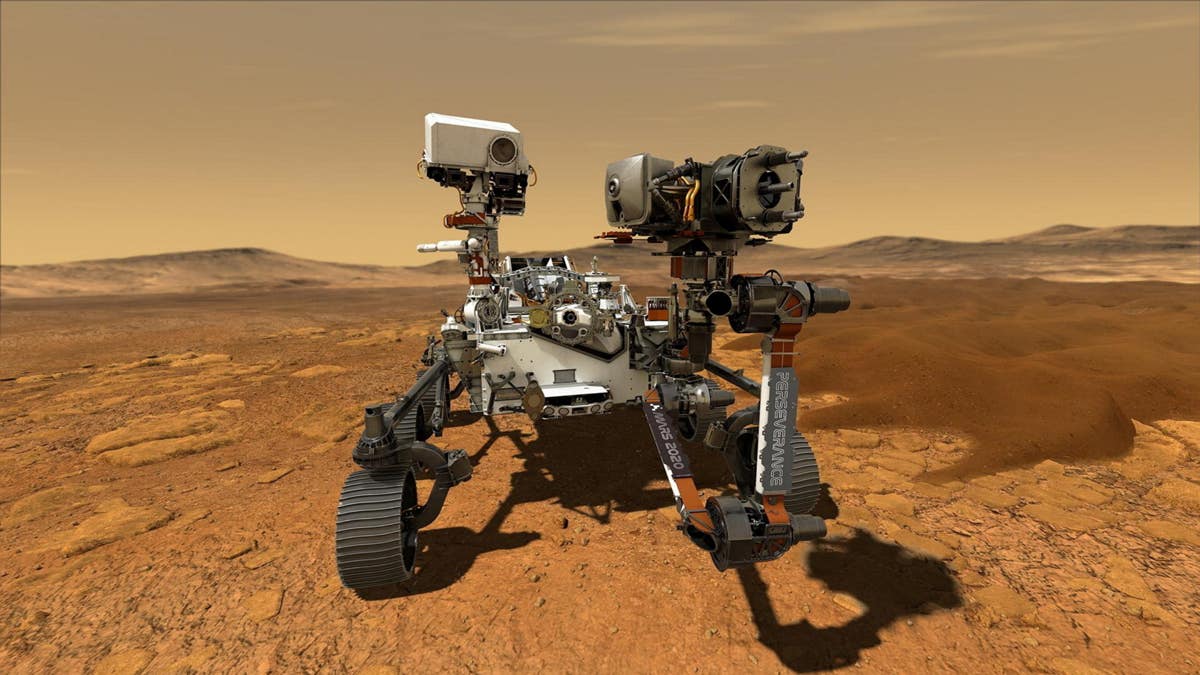Curiosity rover reveals ancient carbon cycle on Mars
NASA’s Curiosity rover discovers carbonates in Mars’ Gale crater, revealing an ancient carbon cycle and new insights into Martian life

NASA’s Curiosity rover found iron carbonate deposits in Gale crater, providing powerful evidence of an ancient Martian carbon cycle. (CREDIT: NASA)
Billions of years ago, Mars was warm, wet, and capable of sustaining liquid water on its surface. Scientists have long believed the Red Planet once had a dense atmosphere rich in carbon dioxide (CO₂), but concrete evidence had remained scarce. Now, thanks to data from NASA's Curiosity rover, the mysteries surrounding Mars' ancient climate are finally coming into sharper focus.
Recent findings, published in the journal Science, reveal a previously hidden chemical archive deep within Martian rock. Analysis from the Curiosity rover provides powerful evidence that Mars once maintained a robust carbon cycle. This discovery opens new possibilities about whether life could have thrived there long ago.
Hidden Clues in Gale Crater
Curiosity, the rover exploring Mars since its landing in August 2012, has drilled into rock formations in Gale crater. This crater once housed a lake, making it an ideal location for studying ancient Martian conditions. Between 2022 and 2023, the rover collected rock samples from four distinct layers representing Mars’ transition from lakes to a dry, windy desert.
Dr. Ben Tutolo, associate professor in Earth, Energy, and Environment at the University of Calgary, led the analysis. His team found something unexpected: high concentrations of siderite, an iron carbonate mineral.
These siderite deposits were significant—between 4.8% and 10.5% by weight—and mixed with layers containing magnesium sulfate salts. Such findings challenged previous orbital data, which had not detected carbonates in these areas.
“The discovery of large carbon deposits in Gale crater represents both a surprising and important breakthrough in our understanding of the geologic and atmospheric evolution of Mars,” Tutolo explained.
Related Stories
Mars’ Lost Atmosphere
Mars today is cold, dry, and inhospitable. Its thin atmosphere, mostly composed of CO₂, measures just 6 millibar—too thin to keep water liquid. But geological formations clearly indicate that Mars once supported abundant liquid water, a condition only possible with a thicker, warmer atmosphere.
Early Mars likely had tens or even hundreds of millibars of CO₂, perhaps more. Volcanic activity probably released between 0.1 to 10 bars of CO₂ into the early Martian atmosphere. Although Mars lost much of its original atmosphere to space, enough remained to keep the planet warm and wet for a time.
Scientists had predicted that interactions between this atmospheric CO₂ and Martian rocks, through chemical processes involving liquid water, would produce carbonate minerals. Carbonates form naturally when CO₂ reacts with minerals in rock, locking carbon dioxide into solid forms and removing it from the atmosphere.
However, despite predictions, scientists previously found surprisingly few carbonates on Mars. Those detected by orbiters, rovers, and meteorite analyses were lower in quantity than expected, mostly limited to small deposits associated with volcanic rocks. These minerals had often formed by hydrothermal processes rather than from atmospheric interactions.
Surprising Carbonate Deposits
Curiosity’s new findings change the picture. The high concentrations of siderite found in Gale crater suggest substantial atmospheric CO₂ was once trapped in sedimentary rock. Scientists believe this siderite formed under conditions where water reacted with rock, then evaporated, leaving behind concentrated mineral deposits. These conditions indicate a drier climate phase but one still capable of significant chemical interactions.
If similar carbonate-rich sediments exist across Mars, global carbonate deposits might have trapped between 2.6 and 36 millibar of CO₂ from Mars' atmosphere. Though a fraction of earlier estimates, it still represents a substantial amount of atmospheric carbon, providing critical insights into the Martian climate transition.
Tutolo highlights the significance: “The abundance of highly soluble salts in these rocks and similar deposits mapped over much of Mars has been used as evidence of the ‘great drying’ of Mars during its dramatic shift from a warm and wet early Mars to its current, cold and dry state.”
Mars’ Ancient Carbon Cycle
Curiosity’s findings also show evidence of an ancient carbon cycle on Mars. Researchers identified iron oxyhydroxides in the carbonate-bearing sediments, minerals indicating that some previously trapped CO₂ returned to the atmosphere. This release could have slightly delayed Mars' cooling by briefly restoring atmospheric carbon.
A functioning carbon cycle is essential for maintaining habitable conditions. On Earth, carbon cycles regulate our climate by balancing atmospheric CO₂, ocean chemistry, and surface conditions. Curiosity’s data now strongly suggest Mars once had its own cycle, capable of temporarily maintaining stable, habitable conditions.
Tutolo explained, “The broader implications are the planet was habitable up until this time, but then, as the CO₂ that had been warming the planet started to precipitate as siderite, it likely impacted Mars’ ability to stay warm.”
Implications for Habitability
Understanding Mars' ancient carbon cycle helps answer a fundamental question: was Mars capable of supporting life? The presence of liquid water and a thick CO₂ atmosphere strongly points to conditions favorable for life, at least for a time. Tutolo’s study strengthens evidence that Mars was habitable until significant amounts of atmospheric CO₂ became trapped in rock, causing temperatures to plummet and water to vanish.
“Scientists are ultimately trying to determine whether Mars was ever capable of supporting life,” said Tutolo. “It tells us that the planet was habitable and that the models for habitability are correct.”
The discovery could also guide future Mars missions. NASA now has clear targets for investigating similar sulfate-rich sites across Mars, potentially uncovering more hidden carbon reservoirs. By understanding Mars' geological past, researchers gain insight into planetary habitability and climate evolution.
Lessons for Earth's Climate
Curiosity's findings are also relevant closer to home. On Earth, researchers are exploring ways to store CO₂ as carbonate minerals to fight climate change. Learning how Mars naturally captured carbon helps scientists design strategies for carbon storage on Earth.
Tutolo noted that understanding Mars' climate collapse also serves as a warning: “Studying the collapse of Mars’ warm and wet early days also tells us that habitability is a very fragile thing.” Even small changes in atmospheric CO₂ levels can dramatically alter a planet's ability to support life.
“The most remarkable thing about Earth is that it’s habitable, and it has been for at least four billion years. Something happened to Mars that didn’t happen to Earth,” Tutolo said.
Mars teaches that stable climates are delicate. The loss of Mars' atmosphere ended its chances for sustained habitability, highlighting the need to protect Earth’s fragile atmosphere.
Note: The article above provided above by The Brighter Side of News.
Like these kind of feel good stories? Get The Brighter Side of News' newsletter.
Joshua Shavit
Science & Technology Writer | AI and Robotics Reporter
Joshua Shavit is a Los Angeles-based science and technology writer with a passion for exploring the breakthroughs shaping the future. As a contributor to The Brighter Side of News, he focuses on positive and transformative advancements in AI, technology, physics, engineering, robotics and space science. Joshua is currently working towards a Bachelor of Science in Business Administration at the University of California, Berkeley. He combines his academic background with a talent for storytelling, making complex scientific discoveries engaging and accessible. His work highlights the innovators behind the ideas, bringing readers closer to the people driving progress.



